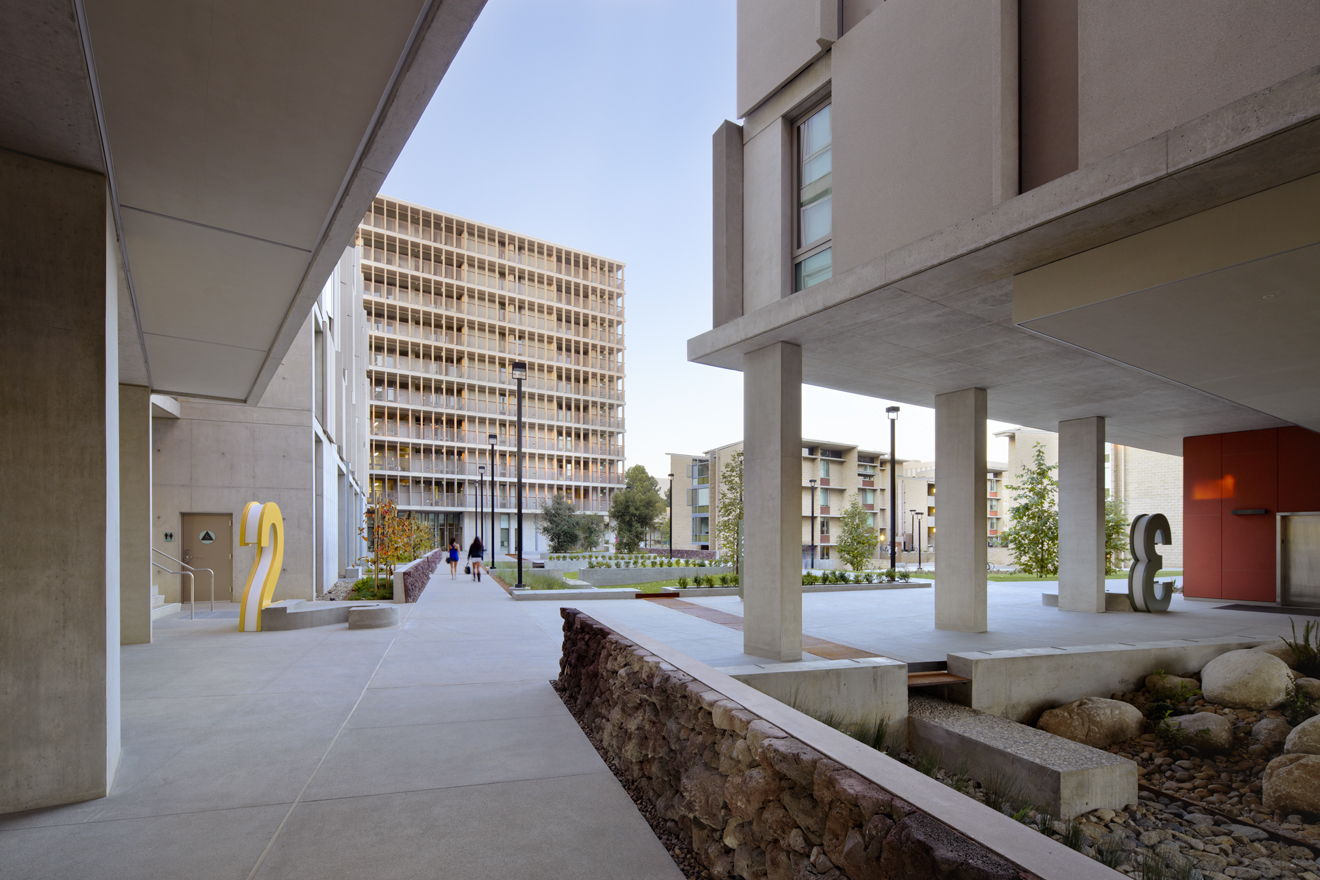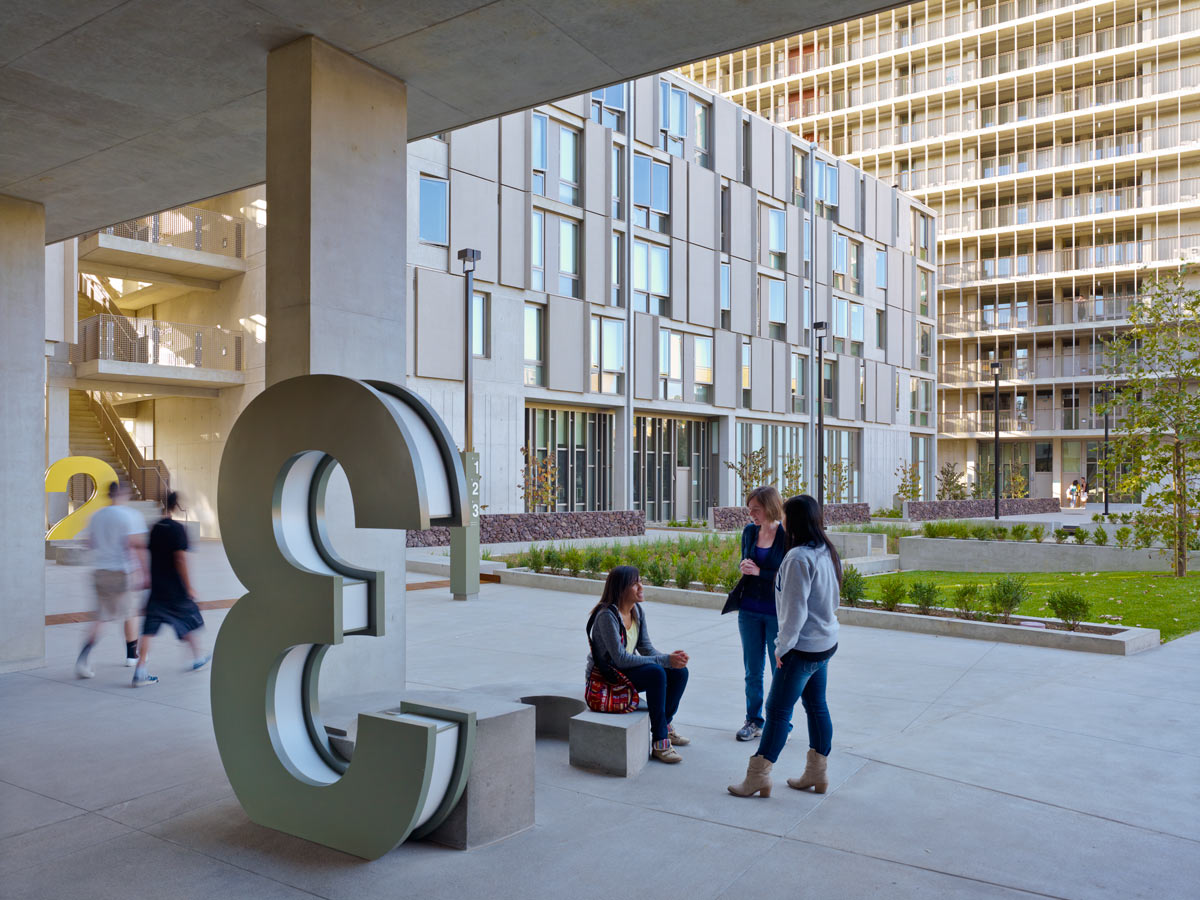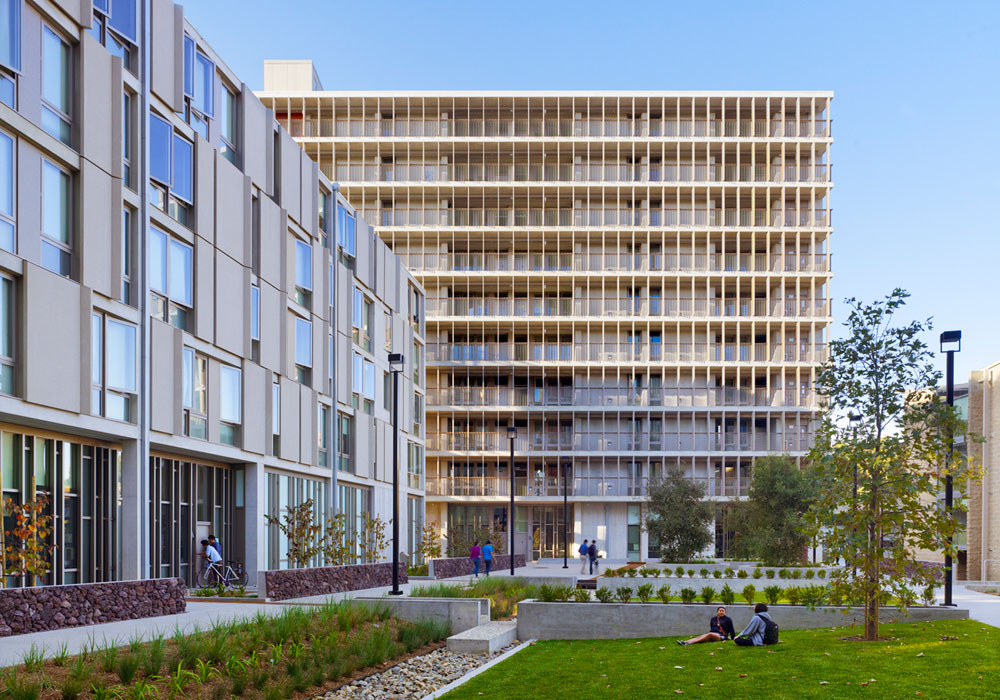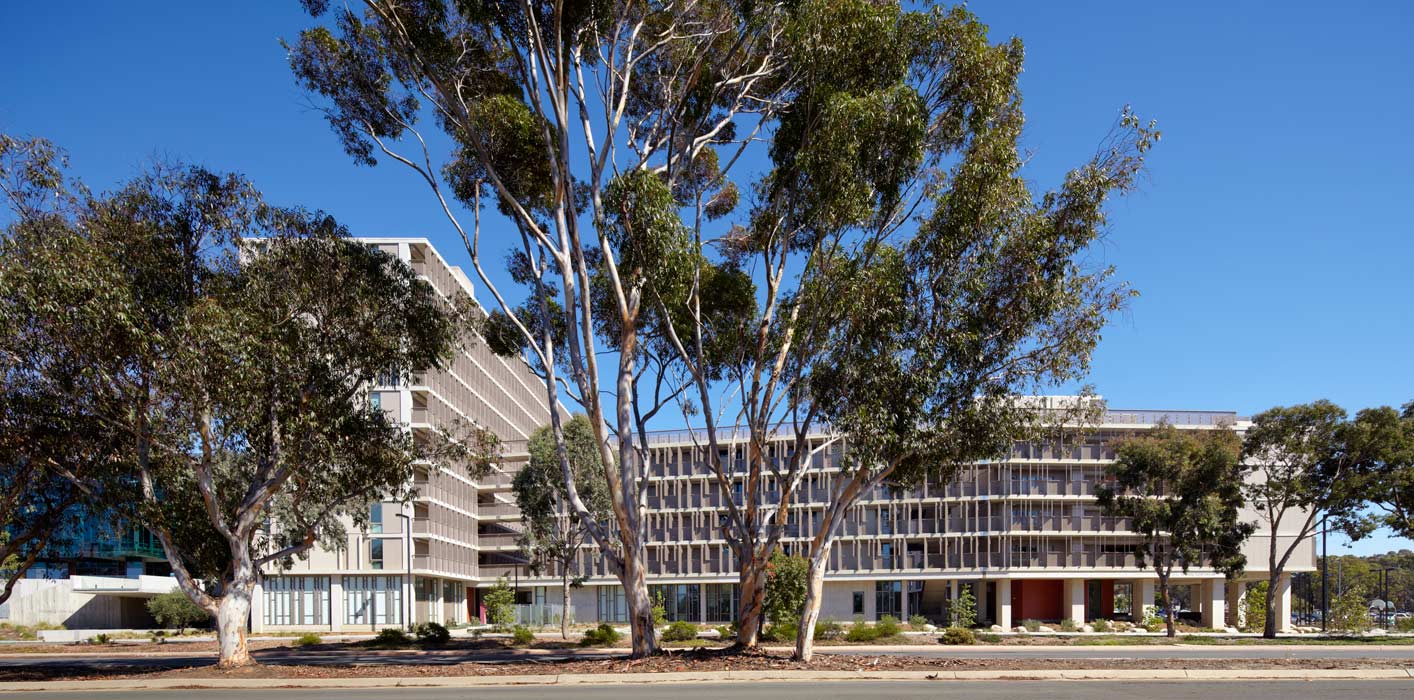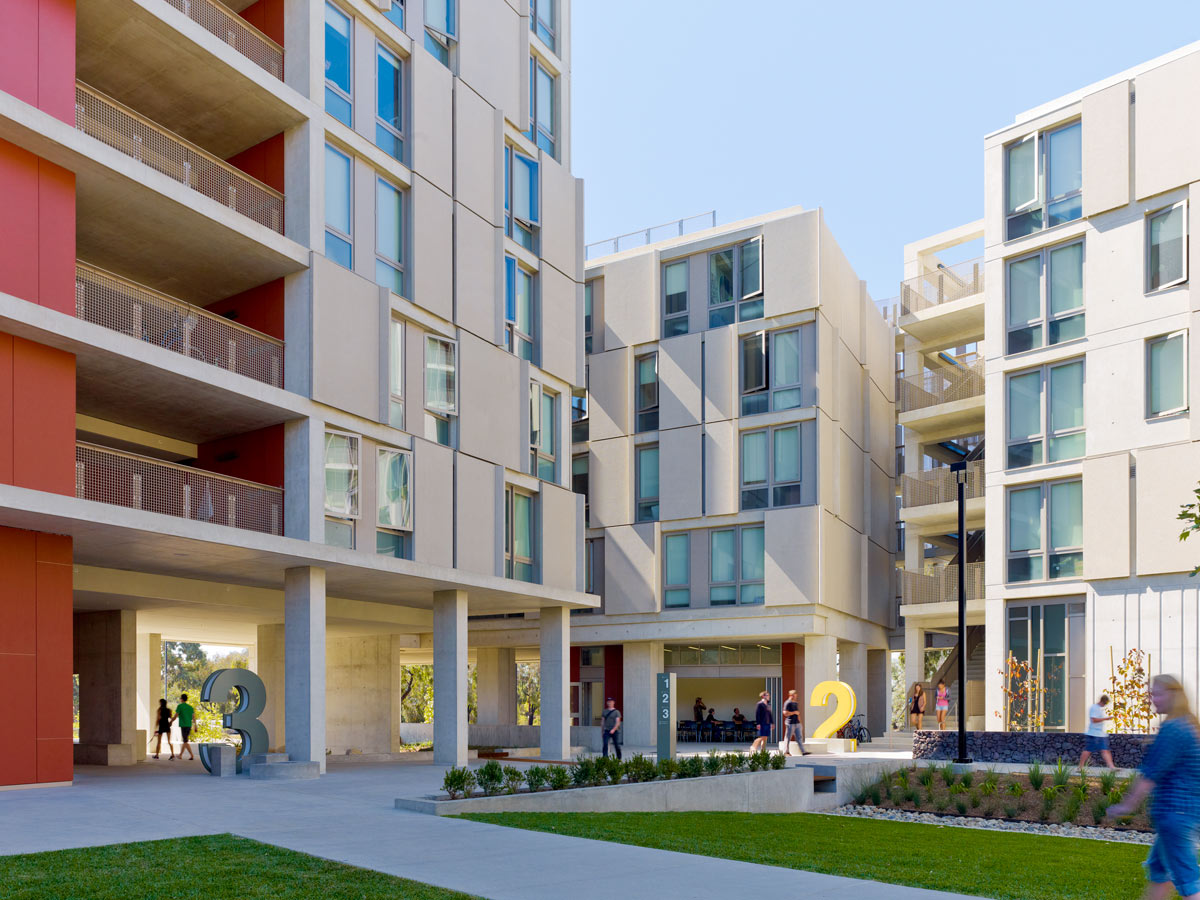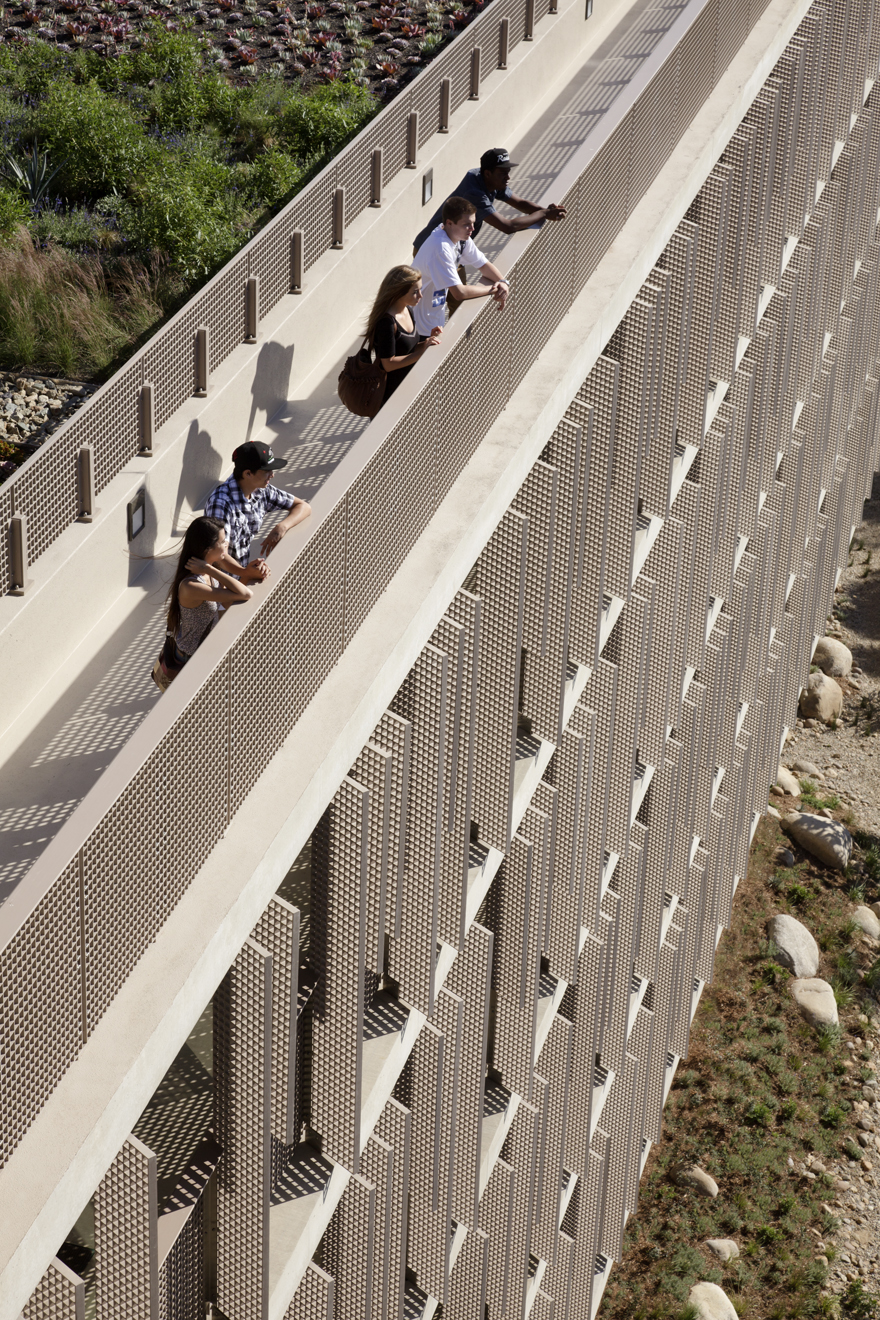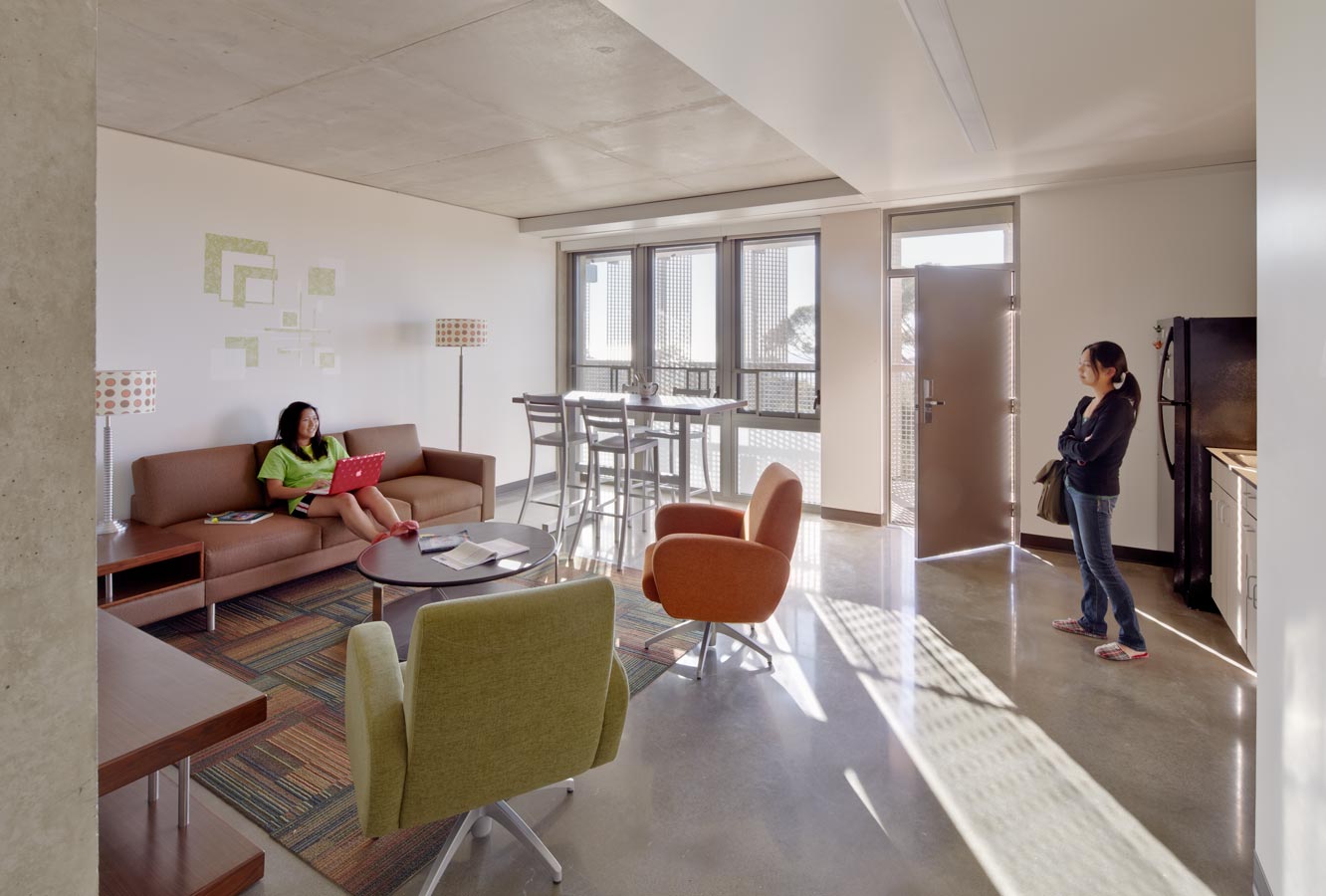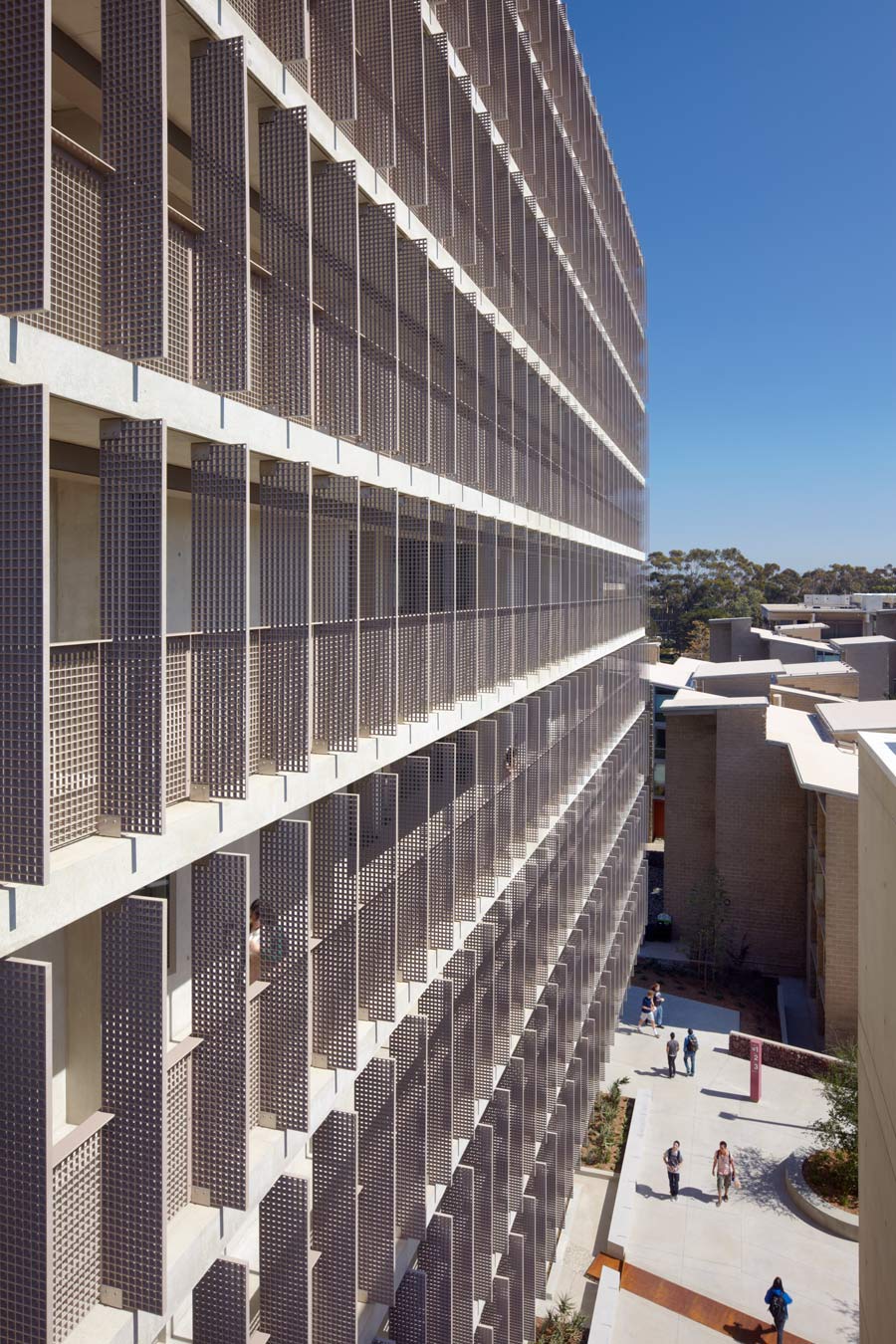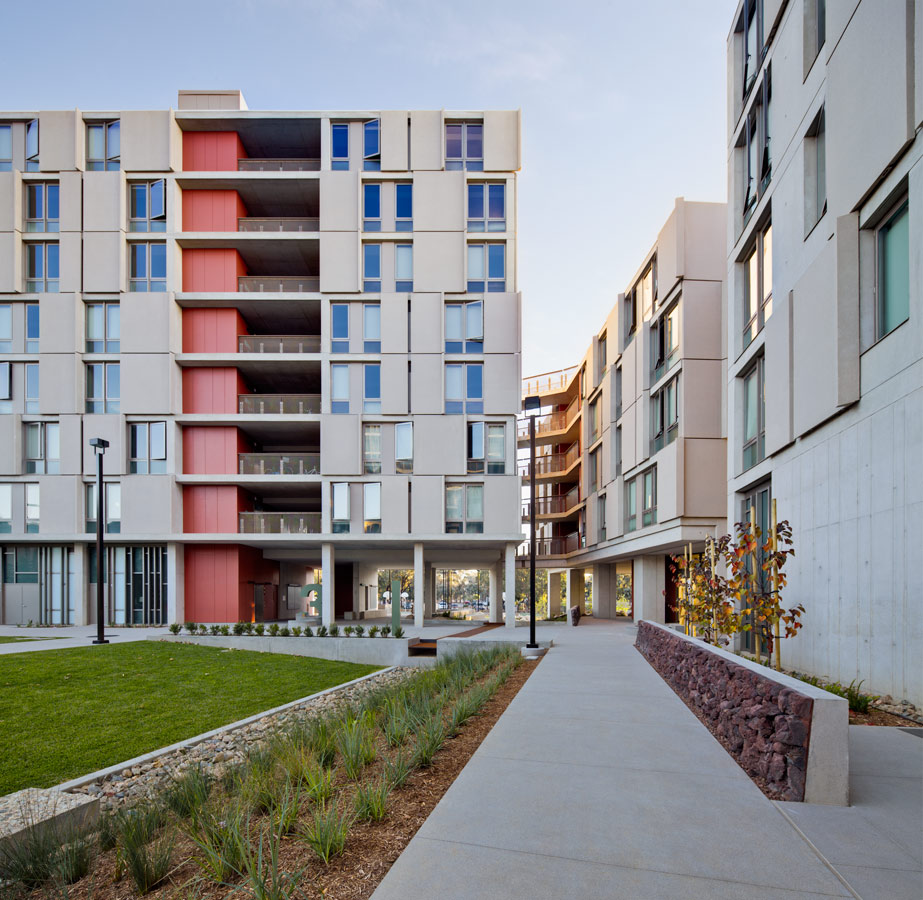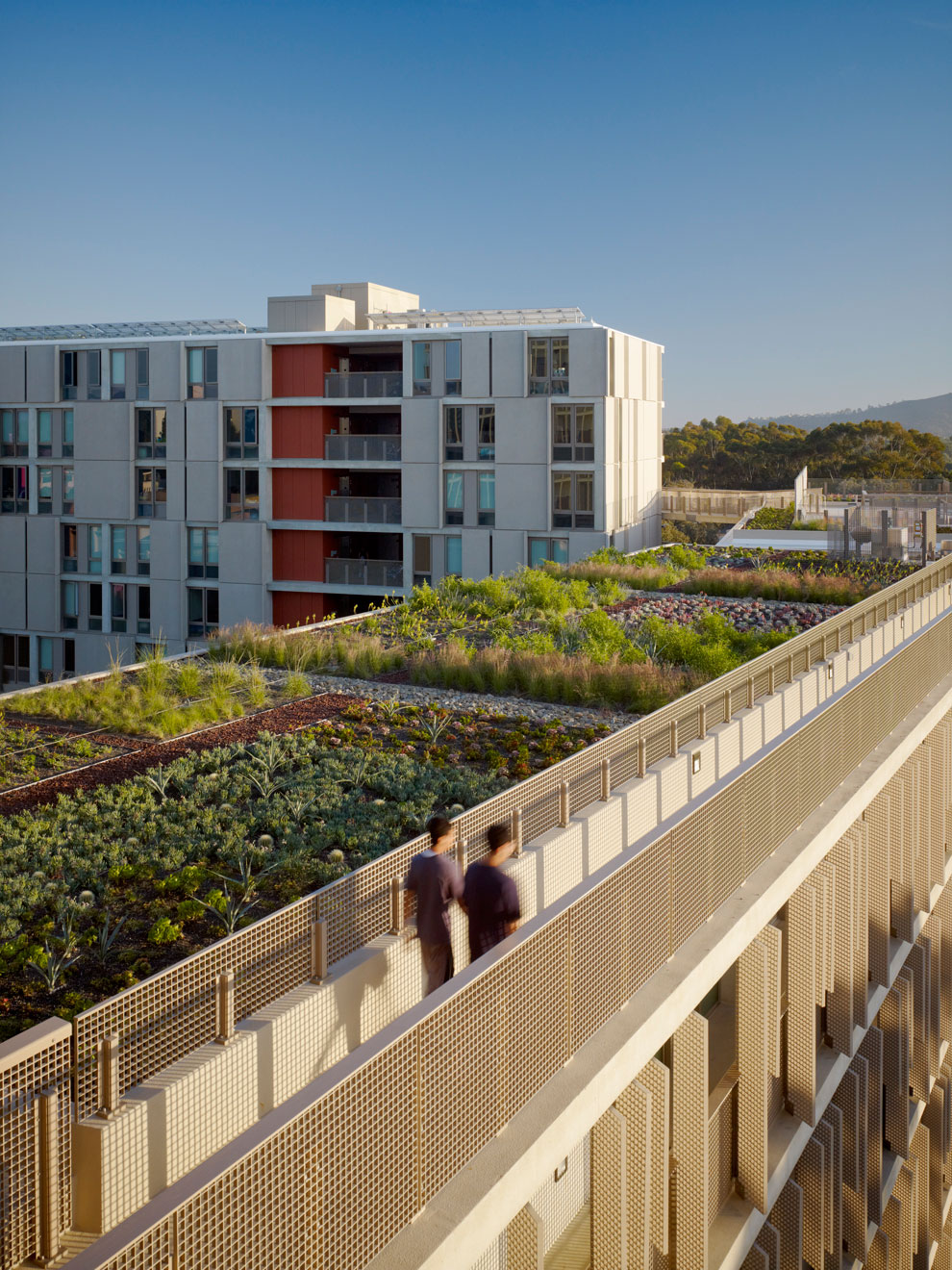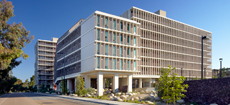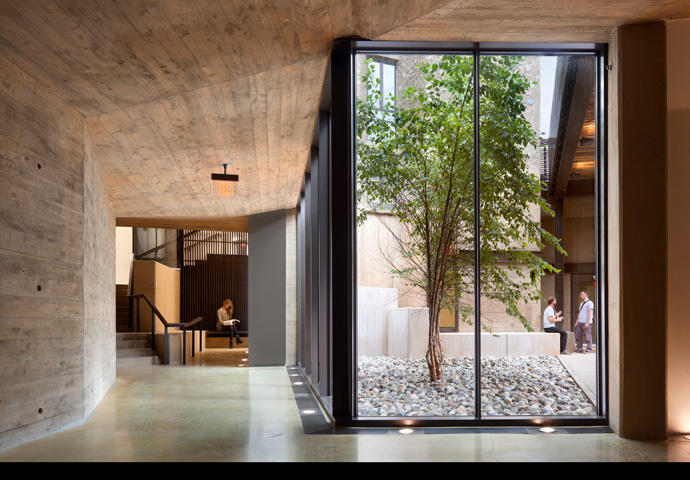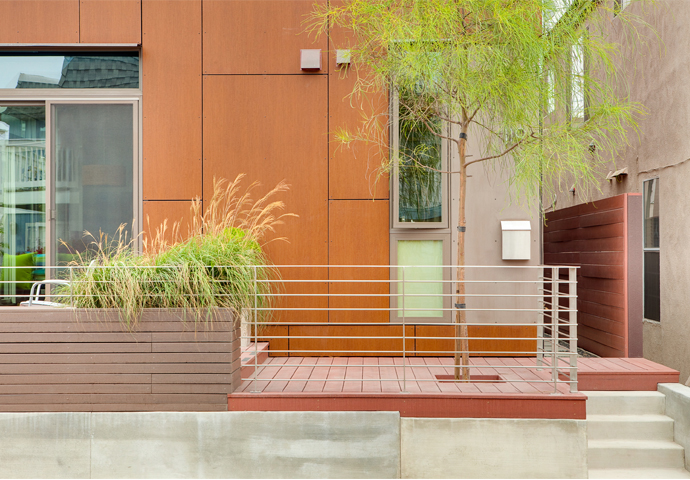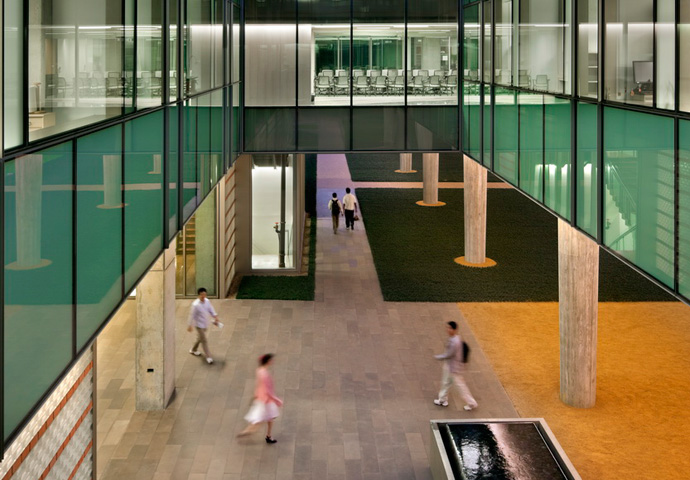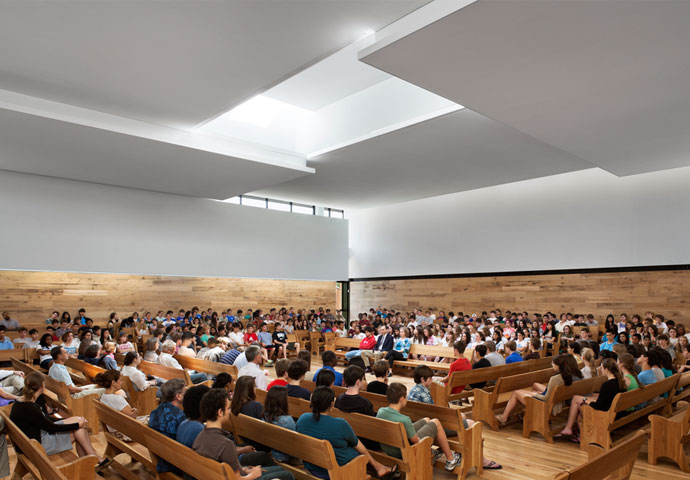How can we conceive a residential complex that builds community while serving as a model for environmentally responsible student housing?
The C-shaped complex defines the west edge of the college, creates a new campus entry, and forms a courtyard that unites the residential community.
© Lenska Aerial Photography
The University of California, San Diego was developed in the 1960s through a master planning process that continues to inform its development. Revelle College was the university's first undergraduate college, named in honor of environmental scientist and oceanographer Roger Revelle. Until the completion of Keeling Apartments, Revelle's students were housed at a remove from the college. The distance discouraged students from using the main dining facilities, attending extra-curricular events, and participating in the larger living-and-learning community.
With the completion of the Charles David Keeling Apartments, all students are in close proximity to their core academic buildings, revitalizing the college. The apartments stand among eucalyptus trees on the southwestern edge of campus, overlooking the coastal cliffs of La Jolla. Three buildings are arranged in a C-shape around a courtyard that creates a new social zone and unites the complex with the existing housing to the east.
Apartments
The buildings adopt elements from classic campus buildings—including exterior walkways, solar shading, and a warm color palette—but they are firmly rooted in a twenty-first century aesthetic. High-quality, cast-in-place white concrete visually ties them to the existing 1960s architecture. A new, sustainable paradigm for housing that is integrated with the college offers each student a distinctive, human-scaled home within a large research institution.
First floor apartments have 14-foot ceilings with full-height window walls looking out to the courtyard.
© Tim Griffith
The higher density that results from this project—and the advantages of attractive housing, views, and location—has the additional benefit of encouraging students who would otherwise live off campus to reside on campus. The apartments are situated to provide expansive views of both the ocean and the mountains from all interior spaces, and from exterior walkways and a large roof terrace that has become a popular gathering place. Single-loaded corridors, with units running along only one side, allow for optimal natural ventilation as well as abundant daylighting. The buildings and landscape promote outdoor living and the active use of exterior spaces, encouraging interaction among students with places to converge and outdoor circulation that leads to chance encounters.
Environment
Courtyard basins, arroyos, and a vegetated roof (shown above) function as a bioretention and bioremediation system. Sediment and pollutants are filtered from the water by soil, rocks, and plants.
© Tim Griffith
Named for Charles David Keeling, the scientist whose research at the Scripps Institute first alerted the world to the possibility of human impact on global atmospheric carbon, the apartments employ a suite of tactics to capitalize on the favorable environmental features of Southern California while moderating or eliminating the undesirable ones. The building arrangement is part of a cooling strategy that takes advantage of coastal breezes instead of relying on mechanical systems. Solar heat gain is controlled with deep overhangs on the south and west facades and industrial fiberglass shading on the west.
The buildings highlight the urgency of conservation. Water-efficient landscaping and efficient plumbing address water scarcity, and the integration of a pilot on-site grey water recycling system provides irrigation for the landscape and a green roof, an unusual feature in southern California.
The Keeling complex gives new life to existing residence halls, and retains a building originally slated for demolition, providing great economic value to the university. It is a contribution to the campus that fosters a sense of community, adapts gracefully across time, and reflects the university's environmental values in a model that will serve future development.



